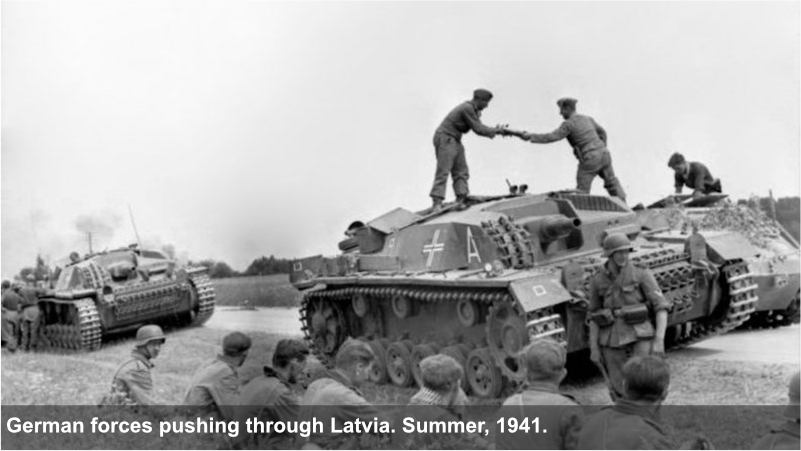Hitler Invades Russia
Episode #5 of the course Ten turning points of World War II by Patrick Allitt
If military history teaches any lesson unambiguously, it is this: Don’t invade Russia! King Charles XII of Sweden tried it, and it ruined him. Napoleon tried it and lost his empire. Hitler should have known better, but by the middle of 1941, he could no longer resist the temptation. Even though his air force had been checked over England, his army had won everywhere else. He believed that a combination of aircraft, tanks, trains, and trucks had shrunk the formidable distances involved in a Russian campaign and would again bring him victory. Wrong!
Stalin, allied with Hitler since August 1939, was slow to recognize the danger of a surprise attack. Spies and army commanders on the Russian-German frontier in Poland warned him, with growing urgency in the early months of 1941, that German forces were gathering. He did not take them seriously and continued to send raw materials into Germany as specified in the two countries’ trade agreement of the previous year.
When German tanks nevertheless rolled over the border, beginning on June 22, 1941, he was devastated. At first, the German advance leaped forward, brushing aside poorly coordinated and feeble resistance, while Stalin dithered about how to respond. In recent show-trials and purges, he had exterminated his own most experienced generals.
German tanks, using the blitzkrieg tactics that had worked so well in the west, advanced rapidly, encircling tens of thousands of Russian defenders, forcing them to surrender, then leaving them to slower-moving infantry to take into captivity. Nearly five million men were captured. So great was the surprise, most Soviet aircraft were destroyed on the ground: A total of 1,200, a quarter of the whole Soviet Air Force, was lost on the first day alone.
As the late summer and fall progressed, however, German lines of communication grew longer and longer. Stalin recovered his balance and began to direct the war effort. The retreating Russians destroyed everything they were forced to leave behind, rather than permit anything useful to fall into their enemies’ hands.
Vital industries in the major cities were dismantled, mounted on railroad cars along with their skilled workmen, and shipped to distant sites in Siberia. Here, they were re-erected and began to turn out war materials in massive quantities, according to a few simple, standardized designs. So remote were these towns, including Magnitogorsk and Chelyabinsk, that they had no need to fear German attack. Meanwhile, with Japan still neutral, Soviet troops from the far east were quickly shipped west as reinforcements.
Stalin’s priorities were to prevent the capital, Moscow, and his most westernized city, Leningrad (now St. Petersburg), from falling into German hands. He was also determined to preserve the city named after himself, Stalingrad (now Volgograd), on the Volga River. The citizens of all three turned out en masse to dig defensive positions, anti-tank traps, and great ditches. Around all three, prolonged sieges would witness scenes of great brutality: starvation, cruelty, and desperate house-to-house and hand-to-hand fighting. Marshall Zhukov, who would emerge as the most distinguished Soviet general, took command and restored morale in Leningrad.
Heavy rain set in during October, turning roads to mud and slowing the advance of German trucks and tanks to a crawl or a dead stop. Then the fierce Russian winter began. Having underestimated how long their advance to the key cities would take, the German commanders now found their men unprepared and unequipped for fighting in the intense cold. Russian soldiers, by contrast, were all equipped with effective fur coats and felt boots that spared them from frostbite.
Three years of bitter fighting would ensue before Russia was freed of German troops. By then, more than 20 million men would have died in the two armies. This was by far the most lethal theater of the entire war.
Tomorrow, we will see how events on the other side of the world brought the United States into the war and into what until recently would have seemed like a highly improbable alliance with Stalin’s Soviet Union. Sub-zero Leningrad and balmy Pearl Harbor could hardly have seemed more different as December 1941 began. By the end of the month, they were intimately linked.
Recommended book
Barbarossa: The Russian-German Conflict, 1941-1945 by Alan Clark
Share with friends

